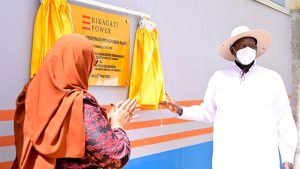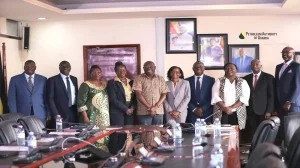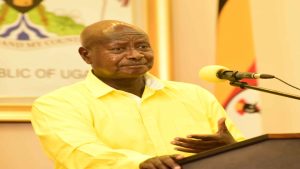Share
According to Ms. Ziria Waako Tibalwa, Chief Executive Officer of the Electricity Regulatory Authority (ERA), Uganda’s power generation capacity would rise from the present 2,000 MW to 52,000 MW by 2040.
Ms. Waako stated yesterday in Kampala during the introduction of the Energy Policy 2023 that the government intends to support the use of nuclear energy for long-term power generation and other purposes.

However, she cautioned Uganda to exercise caution as it implements a power generation mix, noting Kenya’s difficulties.
“The energy sector has received attention over the past five years, but coherence is the most crucial factor. Stakeholder commitment is necessary, including from Cabinet. We ought to communicate in the same language, she said.
According to Ms. Wako, the demand for electricity has grown by 100MW during the last six months.
Matthias Schauer, the German ambassador, claimed that Germany, along with other industrialized nations, is envious of Uganda’s tremendous hydropower and solar energy potential.
However, he pointed out that Germany made the decision to close its nuclear power reactors because they appeared to be posing a possible threat to the populace.
According to Uganda’s Energy Minister Ruth Nankabirwa, the plan will guarantee that the country’s energy requirements are addressed while protecting the environment.
The National Planning Authority’s deputy executive director, Mr. Charles Olweny Ojok, stated that the infrastructure required for the production, transmission, and distribution of power should exist.
Electric service
The nationwide percentage of electrical connectivity access is 57 percent, with 19 percent on-grid and 38 percent off-grid access, according to the Energy Ministry.
Mr. Ojok said that expanding access to power is necessary to meet the ambitious goal of 52,000 MW generation capacity.
He stated, “We want to make sure that there is a steady national flow of electricity into the national grid.
Prime Minister Robinah Nabbanja, who presided over the introduction of the Energy Policy, stated that Uganda, like the rest of Africa, has an abundance of evenly dispersed electricity sources.
These include fossil fuels and uranium, as well as hydropower (15,000 MW), solar (10,000 MW), geothermal (500 MW), heat (800 MW), wind (200 MW), and other sources.

Ms. Nabbanja stated that the Energy Policy will help rural electrification, inclusive growth, and poverty reduction in a speech that was read by the Government’s Chief Whip, Mr. Hamson Obua.
According to Ms. Nabbanja, infrastructure like the Standard Gauge Railway, oil refineries, and the petrochemical sector will need a lot of electricity.
The Energy Policy 2023 was produced through a collaborative process, according to Ms. Irene Bateebe, the Permanent Secretary in the Ministry of Energy, which began in 2018 and ended in 2022.
By 2040, she claimed, everyone would have access to affordable, dependable, and high-quality energy.









